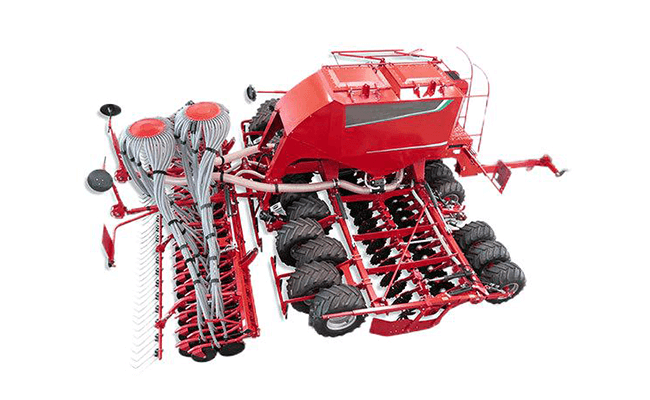In modern agriculture,seeder brands have become more than just tools for distributing seeds; they symbolize efficient harvests. With advancements in technology, precision planting and smart control systems continue to innovate, allowing farmers to manage the planting process like never before. Whether you run a small family farm or a large agricultural enterprise spanning thousands of acres, choosing the right seeder can help you achieve greater yields at lower costs.
When selecting a seeder, it is crucial to understand the unique advantages of different brands. Each of the top five brands offers distinctive features: John Deere is known for its precision and smart technology, Case focuses on efficient operations in complex terrains, Kinze is suitable for field crops with an emphasis on data monitoring, Great Plains prioritizes environmental sustainability, and White planters provide ideal options for small farms and diversified planting. By combining these insights with effective planting strategies—such as proper soil preparation, suitable planting depth and timing, and meticulous post-planting management—you can enhance your agricultural practices and achieve higher yields.
In this article, we will explore the unique strengths of each brand, helping you find the equipment that best fits your needs and elevates your farm’s productivity to new heights.

Contents
1. Top Five Seeder Brands in the U.S.
In the U.S. market, many well-known seeder brands stand out for their quality products and exceptional performance. Here are the top five brands:
John Deere:
A green revolution leader in precision agriculture. As an industry pioneer, John Deere combines precision farming with smart technology to enhance sustainability in agriculture. Its latest ExactEmerge™ series redefines precision and speed limits. This revolutionary electric seed distribution system achieves planting speeds of up to 10 miles per hour without sacrificing accuracy. Additionally, the SeedStar™ Mobile system allows farmers to monitor each seed’s location, depth, and spacing in real time using their smartphones. John Deere’s AutoTrac™ automatic guidance technology seamlessly integrates with GPS systems, reducing overlap and improving planting precision. This makes it particularly suitable for large, high-yield farms.
Case IH:
An expert in efficient operations on complex terrains. Case IH is known for its high traction and capability to handle diverse landscapes, especially in the Midwest. The Early Riser™ series utilizes Rowtrac™ technology, allowing for automatic adjustment of row spacing and planting angles to adapt to varying terrain conditions. Furthermore, the newly launched AIM Command™ spraying system synchronizes seeding with fertilization. This not only saves time but also minimizes soil disturbance. Case IH seeders excel in muddy or hilly terrains, providing effective solutions for farmers.
Kinze:
A dedicated partner for field crops. Kinze is recognized for its adaptability and efficiency, specifically designed for key U.S. crops like corn and soybeans. The True Speed™ planting technology ensures precise seed placement at high speeds. The Blue Vantage™ system offers real-time data monitoring of the planting process. Moreover, Kinze’s Multi-Hybrid planting technology helps farmers adapt to microenvironmental differences in their fields. This makes it ideal for medium to large farm owners who aim to optimize their planting through data.
Great Plains:
An innovator in sustainable agriculture. Great Plains is renowned for its commitment to sustainability, integrating environmental protection principles. This approach helps farmers achieve high yields while maintaining soil health. The Precision Seeding™ technology enhances planting consistency, while the Nutri-Pro® system ensures seeds receive ample nutrients during early growth. Great Plains seeders are perfect for organic farms and sustainability projects, assisting farmers in effectively preserving soil resources.
White Planters:
The ideal choice for small farms and diversified planting. This brand is known for its high precision and flexibility, making it especially suitable for small-scale farms and high-value crops. The VE™ series features a precision vacuum system (SeedVac™) that ensures uniform seed spacing and accurate planting depth. White Planters are particularly well-suited for small farms and horticultural uses, catering to users who require high accuracy and diverse planting options.
2. From Brand Selection to Seeding Optimization: Key Steps for Efficient Planting
After selecting the right seeder brands, farmers need to master the best practices for seed management. This ensures seeds germinate under optimal conditions, improving growth rates and overall yield. Regardless of the brand you choose, optimizing seeding outcomes is crucial. By following these strategies, you can further enhance planting efficiency and achieve higher yields and crop quality.
2.1 Soil Preparation
Quality soil preparation forms the foundation of successful seeding. Here are several key steps for soil preparation:
- Soil Testing: Conduct soil tests before planting to determine pH levels, nutrient content, and organic matter. Based on the test results, add necessary fertilizers and amendments to enhance soil fertility.
- Tillage and Leveling: Tilling loosens the soil structure, improves permeability, and promotes root growth. After tilling, use a rake to level the surface, ensuring a smooth finish to avoid uneven planting depth during seeding.
- Fertilization: Apply base fertilizers before planting to provide essential nutrients for plant growth. Choose fertilizers suitable for the crop’s growth stage and use the soil test results to enhance soil fertility and yield.
2.2 Adjusting Seeding Depth
Seeding depth is crucial for seed germination and growth. Here are some tips for adjusting seeding depth:
- Adjust Depth by Crop Type: Different crops have different seeding depth requirements. For example, corn typically requires a depth of 5-7 cm, while wheat needs 2-4 cm. Understand the optimal seeding depth for your crops to ensure seeds can root and germinate effectively.
- Consider Soil Moisture: In dry soils, increase seeding depth to ensure seeds reach moist layers. In wet soils, decrease seeding depth to prevent seeds from drowning and rotting.
- Use Precision Seeders: Employ seeders with depth control features that automatically adjust planting depth, ensuring uniform seed distribution, which boosts germination rates and growth uniformity.
2.3 Suitable Seeding Time
Choosing the right seeding time is essential for crop growth. Here are some strategies for optimizing seeding timing:
- Understand Climate Conditions: Choose seeding times based on local climate conditions. Warm climates are ideal for early spring planting, while colder regions should consider frost dates and soil temperatures.
- Utilize Weather Forecasts: Keep an eye on weather forecasts and choose days when the soil is moist and conditions are favorable for planting. Avoid seeding during heavy rain or extreme heat to minimize impacts on germination rates.
- Monitor Soil Temperature: Soil temperature directly affects seed germination. Different crops have varying temperature requirements, so understand the optimal germination temperatures for your crops to select the best planting time.
2.4 Post-Seeding Management
Post-seeding management is equally important, and you can optimize planting outcomes in the following ways:
- Timely Irrigation: After planting, maintain suitable soil moisture. Both overly dry and overly wet soils can hinder seed germination. Irrigate according to soil moisture conditions to ensure seeds receive adequate water during germination.
- Weed Control: Manage weed growth promptly after planting to prevent competition for water and nutrients. Use mechanical weeding, herbicides, or mulch to effectively control weeds.
- Monitor Crop Growth: Regularly check crop growth after planting to identify and address issues promptly. Observe the growth condition, and if pests or poor growth are detected, take immediate action.
2.5 Adopting Modern Technology
Modern technology can significantly enhance seeding effectiveness in several ways:
- Precision Agriculture: Utilize GPS and sensor technology to monitor soil and crop conditions in real time, adjusting seeding strategies to achieve higher efficiency and crop yield.
- Smart Seeders: Modern smart seeders come equipped with advanced sensors and automation systems. They can adjust seeding parameters in real time, ensuring each seed roots in the optimal position.
- Data Analysis: Analyze historical and real-time data to optimize seeding plans, enhancing crop production potential and economic benefits.
Conclusion
Choosing and using the right seeder is crucial for improving agricultural production efficiency. By implementing effective soil preparation, appropriate seeding depth and timing, meticulous post-seeding management, and modern technology, farmers can significantly optimize seeding outcomes, leading to higher crop yields and quality. Additionally, being familiar with well-known brands in the U.S. market will help you make informed decisions when selecting a seeder. This ensures that the equipment you choose meets both your land and crop needs while maintaining efficient operation in diverse planting environments.
About Us
As an important player in the agricultural machinery industry, Minno Group is dedicated to providing advanced and reliable agricultural equipment to farmers worldwide. With outstanding innovation capabilities and professional customer service, Minno Group helps farm owners enhance crop yields and optimize farm management. Whether you needseeder brands, harvesters, or other agricultural machinery, Minno Group offers specialized equipment and technical support to meet your evolving agricultural demands. By choosing Minno Group, you gain access to high-performance agricultural equipment along with comprehensive after-sales support and personalized farm solutions. Through scientific seeding strategies and Minno Group’s quality products, you can achieve sustainable high-yield planting and enhance your farm’s overall profitability.

